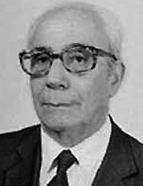

One of the most important studies carried out by José V. de Pina Martins was his proposal for a conceptual and periodological review of the approach to Humanism and the Renaissance proposed in 1948 by Ernst-Robert Curtius (1886-1956), which had been accepted as standard until then. The article “Humanism and the Renaissance. A study of Ernst-Robert Curtius,” published in 1969, and the study “On the concept of Humanism and some historical and doctrinal aspects of Renaissance culture” the following year, based on direct knowledge of Italian bibliographic sources, contributed greatly to reformulating the way these notions were viewed. However, Pina Martins’ research on material bibliography, visual culture and the history of books – which forms the basis of numerous bibliographic exhibitions and catalogues and inventories of antique books that he coordinated – the particular attention she devoted to the history of the textual transmission of works and their publishing fortunes, and even her familiarity with Italian and French culture, are at the origin of other attempts to reconfigure and renew perspectives on Portuguese cultural history in the 15th and 16th centuries. In this vein, studies such as Pico della Mirandola e o Humanismo italiano nas origens do Humanismo português (1964), O Livro Português no Reinado de D. Manuel I ( 1970), The Iconography of the Printed Book in Portugal in the Time of Dürer ( 1972), Humanism and Erasmus in 16th-Century Portuguese Culture (1973), Thomas More au Portugal ( 1983), as well as proposals for the renewal of the periodisation of the history of Portuguese literature (as can be seen, for example, in the study “Sá de Miranda and the reception of a revived ‘dolce stil nuovo’ in the sixteenth century”, from 1985), in his reluctance to admit the existence of a Mannerist period in Portuguese textual production in the 1500s (set out in the essay “Camões et la pensée platonicienne de la Renaissance” from 1972), or even in the revision of the hypotheses put forward until then by critics about the novel Menina e Moça by Bernardim Ribeiro, in the lengthy study accompanying the facsimile edition of this text, published in 2002.
This work is financed by national funds through FCT - Foundation for Science and Technology, I.P, in the scope of the projects UIDB/04311/2020 and UIDP/04311/2020.
